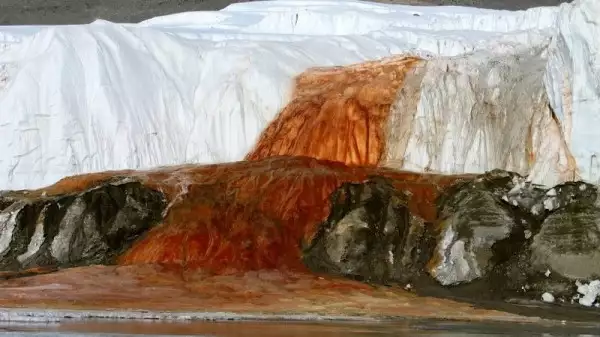At the southernmost point in the world - Antarctica, there flows a unique waterfall blood red in color. The five-story phenomenon trickles slowly from the Taylor glacier into Lake Bonney.
The red waterfall was photographed in the region of the McMurdo Dry Valleys, one of the places least expected to contain such a natural phenomenon.
But what's even more unusual is that the waterfall is bright red in color. Of course, it is not real blood but a purple hue, similar in appearance. According to researchers, there is nothing scary about the waterfall.

5 million years ago, sea levels rose and flooded East Antarctica, which led to the formation of a salt lake. Millions of years later, the glaciers that had formed in the upper regions of the lake cut it off from the rest of the continent, meaning that the water in Blood Falls is something akin to a water time capsule, preserved 1312 ft (400 m) underground.
The water that was separated from the rest of the continent and that fills the waterfall has a completely isolated atmosphere - i.e. it was not exposed to sunlight and is completely devoid of oxygen.

Furthermore, it is exceptionally rich in iron, which seeps into the water through the glaciers, digging out the ground underneath them under the lake.
When the water from the lake passes through cracks in the glacier, the salt water flows downward.
Since the water is unusually rich in oxygen, when it comes into contact with the air, it acquires a rusty color, which looks blood red against the background of the white Antarctic snow.
The salinity of the water in the lake exceeds the salinity of the ocean fourfold, which means that the water at the falls does not freeze even at 10°F (-10 °C).
Blood Falls was discovered in 1911. The first Antarctic explorers attributed the color to red algae, but later it was proven that iron oxides, a consequence of the unique metabolism of microorganisms, were responsible for the color.









